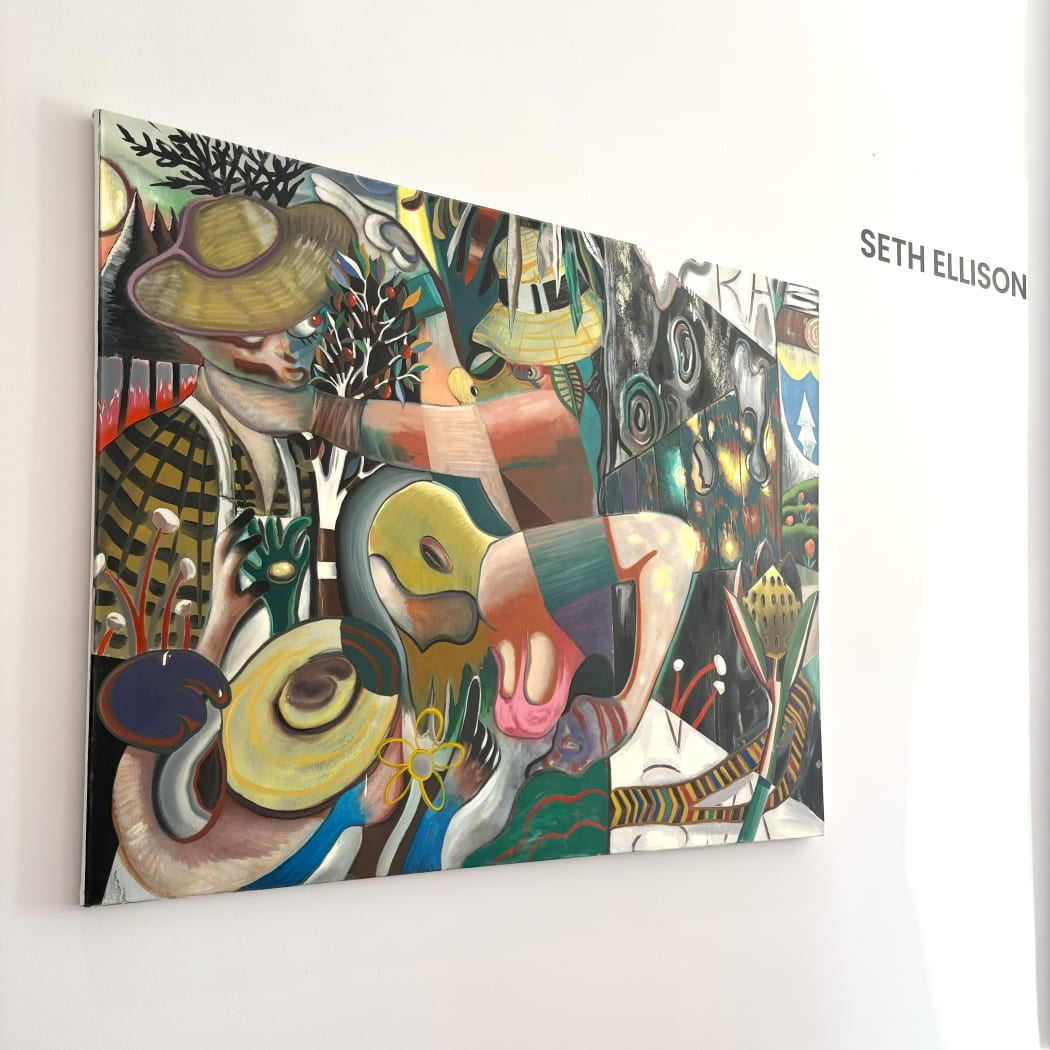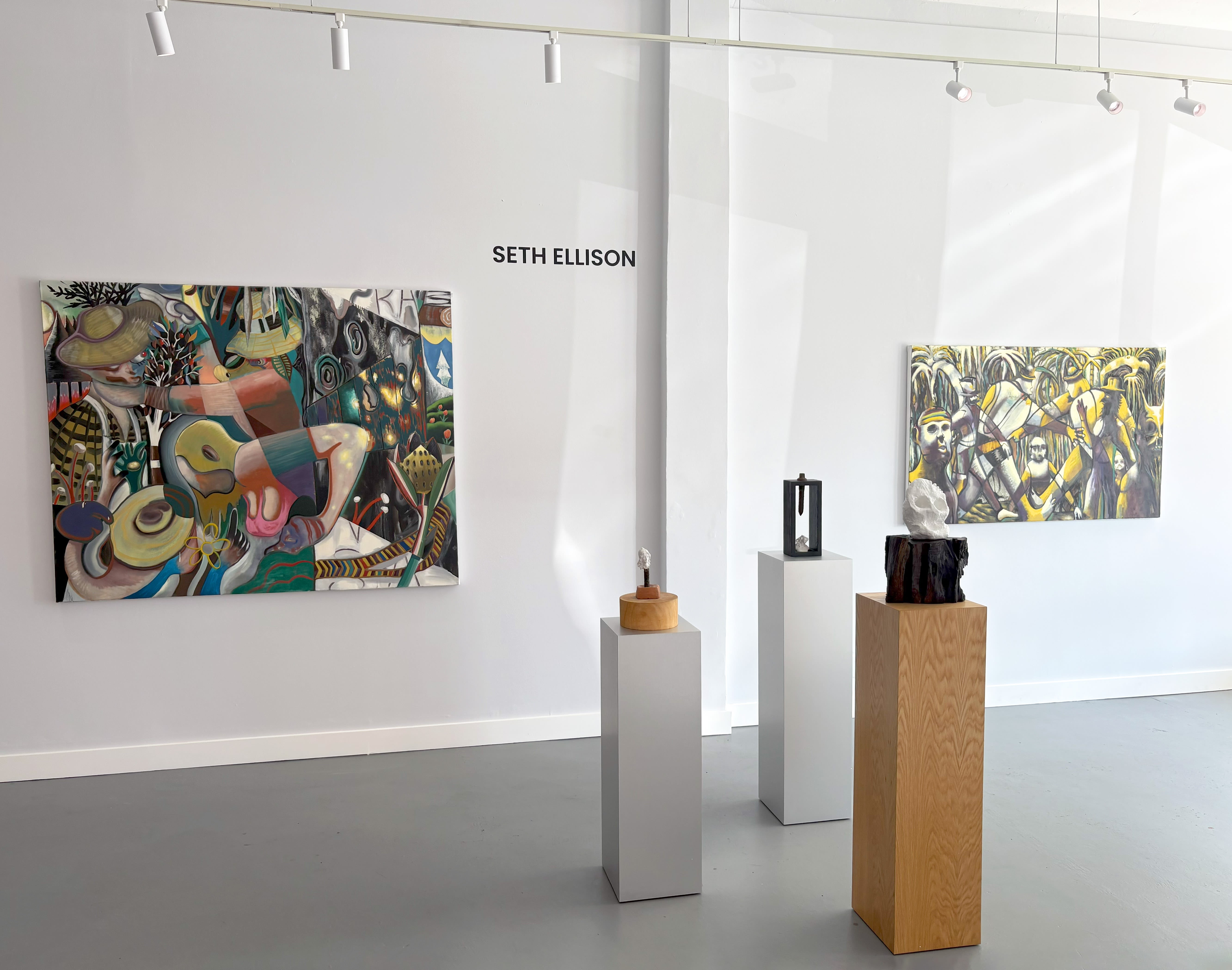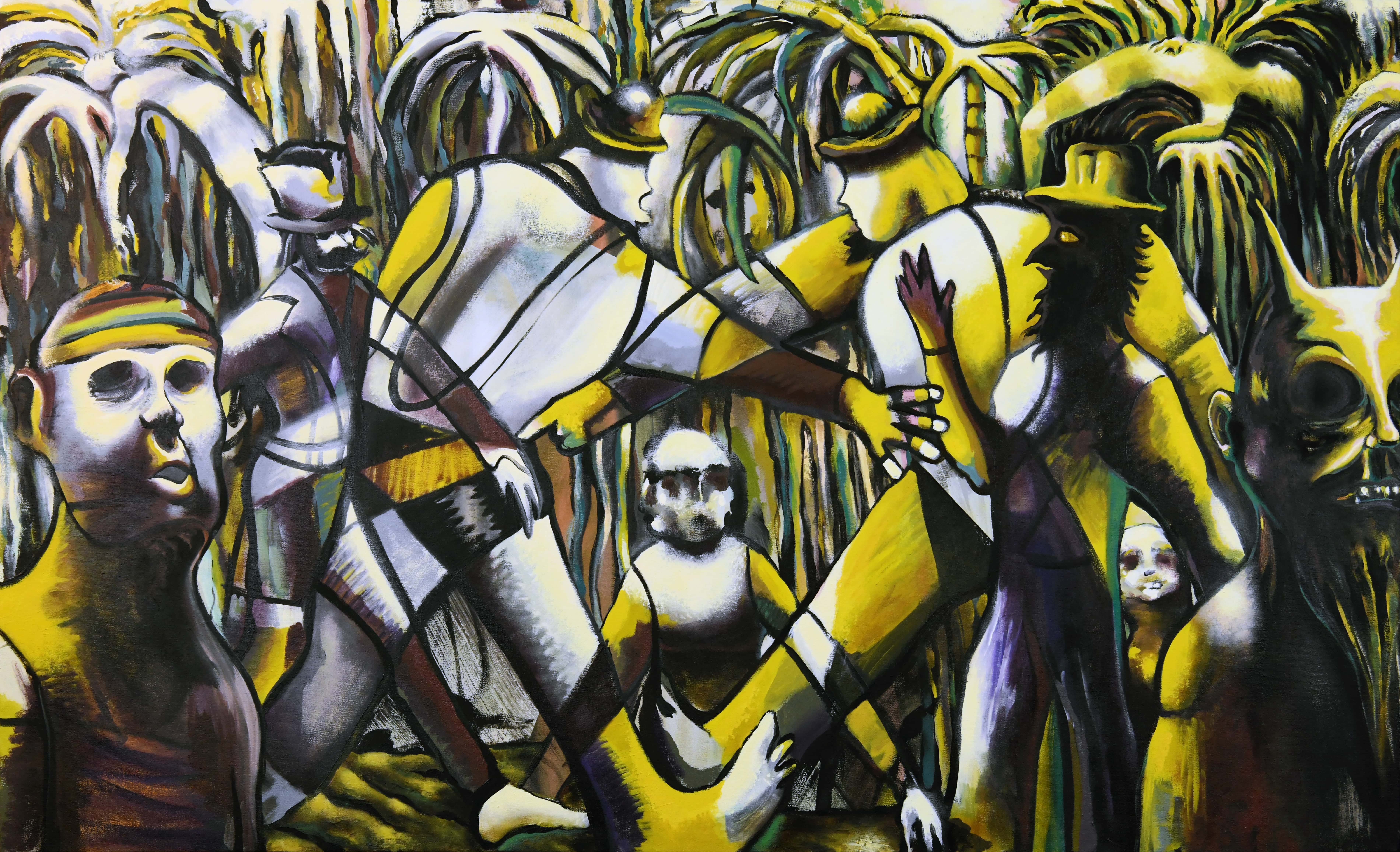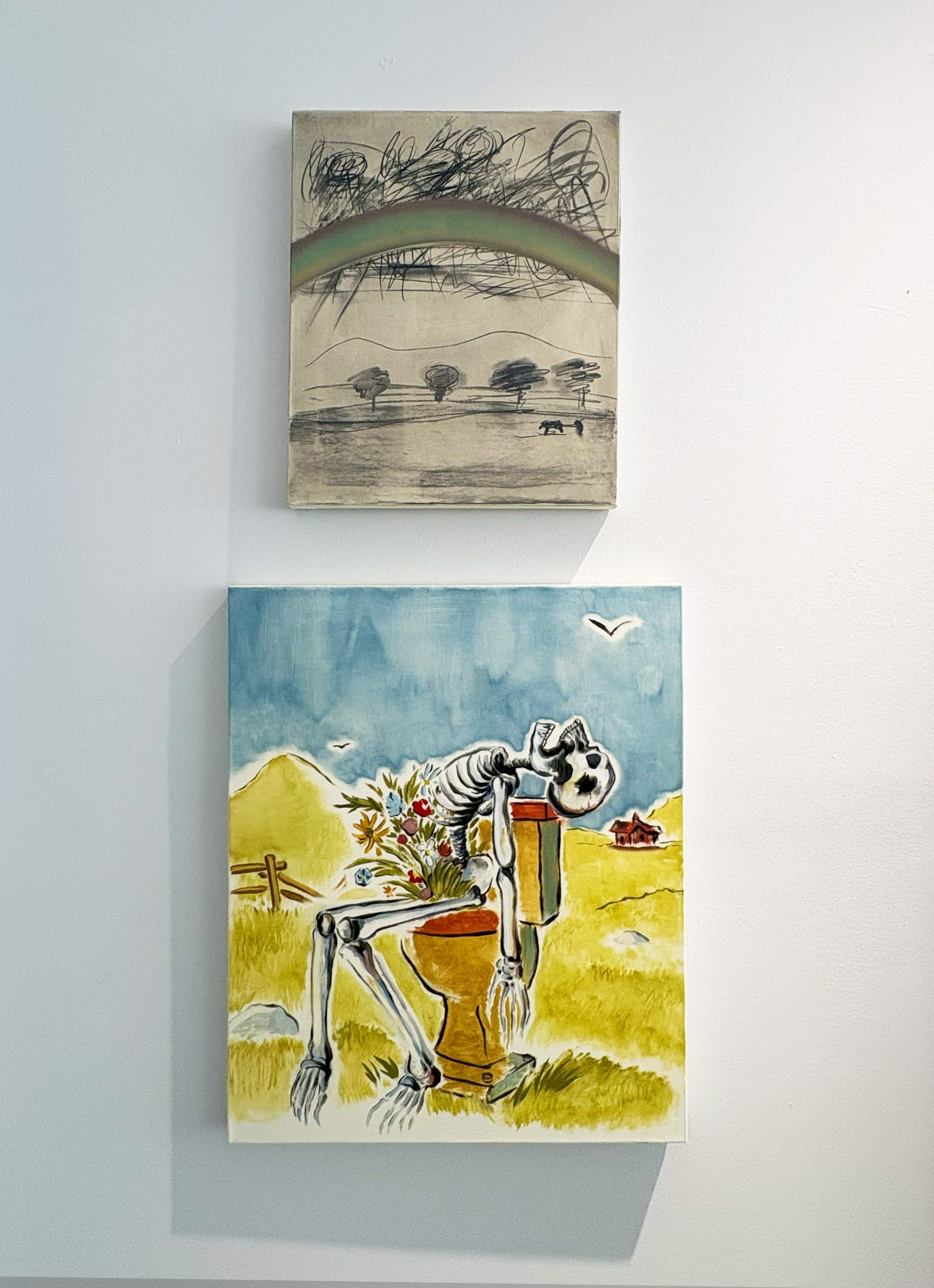
Join us as part of the final interview from our February exhibition On The Other Side with Pennsylvania-based painter Seth Ellison. Seth's work was one half of a exploration into concept of embracing aspects of life far from our own with multi-media artist Khotan Fernandez in an exhibition from February 7 - 28.
Read along as Seth recounts the deeper analogues of his work, and how his process arrives to his mesmerizing depictions of the rural American south.
You chose a part of America's culture that is often shied away from. Beyond your upbringing, what makes you so keen to represent it?
Seth Ellison: I guess I’ve always been the child who touches the hot stove when told not to. Even when I get a third-degree burn, something in me wants to try again to know for sure — then I want to warn others and condemn the son of a bitch who left me alone with it. America is the “Land of the Free,” so they say, but there are all these things in its history we’re told it’s best to leave be. How are you supposed to do that when you grow up in a place and time where you’re confronted every day with the persisting remnants of its dark past?
Do you find that your work is trying to give solace and redemption to these parts of history, or is it something else entirely?
SE: Those are very lofty aims, and I think it would be arrogant of me to assume it does. A lot of what I’m talking about in those works can’t be resolved through painting. However, maybe it gives me peace to see it finally brought to fruition in the real world — like a sigh I’ve been holding in my entire life. If somebody gets something out of that, all the better.
Installation shot from On The Other Side. Pictured left The Hatfields and McCoys (2023), pictured right The Encounter (2023).
Your aesthetic ranges from highly representational figurative pieces to almost absurdist abstraction. What defines the aesthetic of a piece as you make it?
SE: I would love to say I meticulously plan everything out, but that would be a lie. I store things away that I’ve seen: artists I love, places I’ve been, people I’ve met, and the things said and unsaid. When the time comes, though, I leave all of that at the door — even the desire to express — and instead “channel.” In my best work, I don’t even know how I got to the endpoint.
The structure of your work has evolved over time, and it feels like you call back to different eras of art history. What draws you to them?
SE: For me, I think it just comes down to feeling a kinship with other artists throughout history. Like, if we met, they would get me and my work on some level, even if they didn’t like or understand it. I look at a Gainsborough, for instance, and there’s something there that rings so true to me that I feel — probably delusionally — that our experiences are uncannily similar. In that way, maybe I’m trying to continue the conversation.
Pictured above; Seth Ellison. The Encounter. 2023. Oil on canvas.
How much of yourself makes it into your work — your experiences and stories?
SE: How could it be otherwise? I put it all out there, even when it’s cloaked in symbolism and metaphor and against the best advice of the people who know me. I don’t care what you make or what shapes and colors you choose — you’re always there, whether you want to be or not.
As a follow-up, does it feel like your work is a narrative of your life in that way?
SE: There once lived a little-known Spanish artist whose name escapes me. Anyway, he really didn’t do anything noteworthy in life, but I remember him saying, "Painting is just another way of keeping a diary." I think he got that right.
What advice would you give to the next generation of artists?
SE: I think I’ve said this before in another interview, but it’s the only thing that matters — so I’ll say it again: You’ve got to have the will of the devil! Tattoo that on your forehead in red and underline it.
Installation shot from On the Other Side. Pictured top As You Will (2017), pictured below Darn Nigh Hopeless (2021).
About the author
Gabe Torres




